A Reusable Face Mask for Everyday Use
Update 06/12/2021: As a result of the vaccination campaign in the US over the course of the first half of 2021, the CDC has since updated its guidance on masks for those who have been fully vaccinated. Their guidance no longer recommends or requires face masks for individuals who have been fully vaccinated in most situations. This is a very welcome development and a good sign that the US has turned the corner on COVID-19 pandemic recovery. Note that most of the content of this article was written in the context of the second wave of COVID-19 around September 2020. While masking-up is not as critical now given the vaccination rate in the US, it is still very much applicable to those who have not been vaccinated for COVID-19 or living in regions where the vaccination rate remains low. I hope that at least the ideas in this article will remain to serve those individuals until the global population has comfortably turned the corner on the pandemic. Detailed information about vaccinations can be found here (a great suggestion by a local reader!) and a snapshot of the latest vaccine developments can be found here.
At the time of writing, there is no readily accessible vaccine for COVID-19. In the U.S., vaccine candidates are progressing, but still undergoing Phase 3 Efficacy trials (track the latest progress here). COVID-19 testing, while useful as a snapshot of one’s probable infection condition, does not guarantee prevention from future infection and is a challenge to take on a regular basis.
To help slow the spread of COVID-19 and prevent the overloading of critical medical personnel and supplies, the CDC has recommended the general public to use cloth masks or face coverings. The cloth masks and face coverings are intended to act as physical barriers to prevent you from spreading the virus to others as well as preventing others from transmitting to virus to you.
If you are like me and live in an area with a mandatory mask requirement, the mask itself has become an integral part of every day life. More and more I have been trying to find a mask that conforms more to my life rather than me having to conform to it. The challenge is that my seemingly everyday routine has quite dynamic requirements.
For example, I have found the need for a mask that:
Is breathable during outdoor activity/exercise
Creates a good seal when indoors where adequate distancing cannot be maintained (e.g. grocery store) or in areas of questionable air quality
Is easy to put on/remove (don/doff) when needed (e.g. while eating, when transitioning to an area where there is no one in proximity)
Is comfortable and wearable throughout extended periods of time (e.g. with glasses, at the workplace for > 8 hours)
Can be easily cleaned/disinfected
Doesn’t look like it something out of Mad Max
So, with nothing else better to do during a global pandemic, I set out to see if I could create my own “homemade” mask to address these needs, with the end goal of reducing the overall friction in wearing a mask. Even if you live in an area without mandatory mask mandates, the decision to wear a mask is an important one that affects the health and safety of those around you. I hope that any reduction in friction will encourage mask usage for those who are looking to make that decision.
This mask design is not FDA or NIOSH approved and is not intended for use in healthcare or medical environments when regulatory-approved masks are available.
Design Approach
To meet the requirements set out by my day-to-day routine, this mask:
Has the capability to interchange filter material
Is made of light-weight, flexible materials with built-in gasket
Guards filter material from external contact
Has an adjustable fit and supports a variety of loop/headband/lanyard configurations
Is machine-washable
Let me get into why I believe these features are necessary based on my experience over the past few months of experimentation.
Interchangeable Filter Material
During the initial stages of the COVID-19 pandemic (late March, early April 2020), masks and other personal protective equipment (PPE) were in short supply, especially for critical medical workers. The 3D-printing community responded quickly and it was at this time that I stumbled upon the Montana Mask and USC Keck designs. These initiatives were instrumental as a stop-gap to provide PPE to medical workers in the absence of FDA or NIOSH approved masks.
For the first few months, simply because surgical masks and filter material were in such scarcity, I had decided to print my own copies of these masks and use in my day-to-day. A key attractive feature of the 3D-printed masks was the ability to efficiently use a variety of filter materials without needing an entirely different mask. This efficiency comes from how the majority of the mask acts as a holder and funnel for the filter material, where all the air ideally enters and exits from.
There is a trade-off between filtering efficiency and breathability for different filter materials. Depending on the relative risk of COVID-19 aerosols present and activity level (e.g. indoors vs. outdoors), one might choose to select higher filtering quality over breathability or vice-versa. This can be accomplished by either selecting a different material or changing the number of layers. This independent study from Smart Air compiles a list of common materials and their relative filtering and breathability performance. A study from Duke University found non-valved N95, 3-layer surgical masks, and combinations of cotton and polypropylene (PP) layers were the most effective for filtering COVID-19 droplets.
Based on these studies and personal testing, I determined that the following materials had the best balance for filter efficiency, breathability and material availability to incorporate into the mask design:
3-layer surgical mask
Commercial HEPA filter (preferably synthetic/PP/non-fiberglass type, with the fluffy/fiber side facing away from the face)
Filter Material Guards
To protect the user from unwanted exposure to the COVID-19 virus, it is important to prevent contact to the front of the filter material (facing away from the user), which could be directly exposed to the virus in day-to-day interactions. Most traditional face masks do not have a separate cover for the filter material, so users must be careful not to touch the front of the mask or place the mask on a potentially infected surface.
A net/air-chamber is built into this mask to ensure good airflow while preventing user contact with the front of the filter material itself. The net is designed to maximize the surface area, while minimizing volume as much as allowed by this material’s manufacturing process. As an added bonus, it makes it easier to just set the mask down anywhere without worrying about further contaminating the front of the filter material.
Light-weight, Flexible Material with Built-in Gasket
Since the original 3D-printed masks are designed to be printed with hard materials such as PLA or nylon, it is difficult to get a good fit without the use of external gaskets. These gaskets drastically increase the seal of the mask, but must be carefully attached. I have to say I got very good use out of the Montana Mask during the initial few months, but as soon as I tried taking the mask out biking on a hot day, through all the bumps on the road, sweat and heat, the gasket had eventually detached from the adhesive holding it to the mask. I learned that, since the gasket and mask are a mixture of soft and hard materials, there is not much compliance to extreme temperature or humidity changes. Also, it also did not allow much flexibility for day-to-day facial movements (e.g. it was hard to get a good seal when smiling, laughing, or anything that required the jaw or cheeks to shift).
To resolve this issue, I explored using flexible 3D-printed material to print both the mask and gasket as one. I have come across flexible materials for SLA, FFF, SLS, and MJF 3D-printing processes, all of which emulate 80A to 90A shore durometer rubber (similar to a shoe sole or tire). It is important to note that these materials have either not been tested for or do not meet any USP classes for biocompatibility (if you do know of any flexible 3D-print material that does meet bio-compatibility standards, please let me know!). Nonetheless, they are useful for rapid-prototyping purposes to test the fit and functionality rather than going through the expensive initial-cost injection molding process. I tried out some designs printed with SLS TPU, which has applications in footwear and medical devices industry. I found the footwear application quite relevant, as I started to see some parallels in the design and requirements for shoes and masks. Not only did the flexibility of TPU give the mask more compliance to facial movements, I could also experiment with different types of gaskets. I explored the use of a thinner gasket with sipes for better grip when sweat is present, thicker gaskets for tighter seal and greater degree of compliance, and a hybrid of the two.
Adjustable Fit and Support for Variety of Strap Configurations
I learned over time that the better the initial fit of the hard material to the user’s face, the less pressure/tightness needed on the headband or ear-loop elastic to get a good seal. I was having a difficult time wearing the 3D-printed mask for an extended period of time simply because I needed to tighten the elastic band so much to get the gasket to conform. I found the mask strap configuration a critical factor to getting a good fit, and ideally should be co-designed with the mask to achieved the best overall comfort.
To get good initial fit, I started with a 3D model of the most “average” face I could find and build out key points around the nose, cheeks and chin. I left room around the mouth to allow freedom for talking and facial expressions. This led to an excellent out-of-the-box fit, even though the masked shape was not based on a model customized specific to me.
After getting a few prototypes back, I was able to test out different strap configurations. Most homemade and surgical masks feature ear-loops, while N95-type masks have a full headband. The headband allows for a tighter fit and relieves irritation/pressure around the ear, while the ear-loops are easier to don/doff. I tested out both configurations and adjusted the mask attachment points to support flat-band type straps and a locking mechanism for shoe-lace type straps (continuing with the footwear parallels).
I have found myself preferring the ear-loop configuration due to it being more convenient without much trade-off since the mask itself already has a good fit and the ear-loops can be made adjustable. Both methods can be implemented with a single shoe-lace, which comes with a lanyard built-in. The lanyard allows the mask to hang around the user’s neck while it is not being actively used, and I have found this a useful feature to have when taking a quick rest for eating or drinking.
Machine-washable
The CDC recommends washing home-made masks in the washing machine and drying on the highest heat setting. I found this is one of the most convenient ways to prep a mask for reuse, as most people have access to a washing machine and dryer. The ability to put the mask in washing machine is an easy way to remove dirt and oils and make the mask feel refreshed for the next use. To be able to survive many wash and drying cycles, the mask material must be resistant to water and high temperature (the hottest temperatures in the washer and dryer are typically below 60 degrees C). The implication on flexible materials like TPU are that the compositions must be resistant to hydrolysis and deformation at high temperature. This had led to testing out different types of TPU and 3D-printing methods, monitoring mass change over washing/drying cycles.
From my testing experience, I highly recommend placing these masks in the washing machine at least on a weekly basis, under a quick wash cycle with warm water. Non-dyed versions can go with similar color clothing. Dyed versions must go in a separate wash cycle. I haven’t yet determined how many wash cycles a mask can survive (and thus the expected lifespan for a given material), but I expect to be able to make an estimate based on the mass change over cycles data.
Testing
I have been wearing this mask (or some earlier version of it) on a daily basis over the span of time from mid July to early of September 2020. During that time I have had to wear it in the office space for 8+ hours per day during the weekdays and have gone on multiple strenuous hiking trips with continuous wear. A total of 7 versions of the mask were manufactured over the course of the summer.
The first prototype (V0) with the full gasket and surgical mask-based filters.
List of manufactured prototypes (with notes)
V0 to V6 shown in order in ascending order from left to right (V0 far left, V6 far right)
V0: First prototype with full gasket (gasket along the full outline of the mask) on SLS TPU (July 14th, 2020)
V1: V0 prototype with sipes instead of gasket (July 14th, 2020)
V2: V0 with black dye, larger air chamber, additional ear-loop holes (August 3rd, 2020)
The material directly from the manufacturer was initially over-saturated with the dye. Dyed versions must be washed separately in the washing machine before wearing.
V3: V2 but with sipes instead of gasket, additional mesh layer between filter material and filter guard (August 3rd, 2020)
The additional mesh layer was intended mostly as a cosmetic change to mask the filter material color. However, to fit another mesh layer, the air chamber enlarged. I found this cosmetic trade-off was not worth the change in the mask profile and material cost.
V4: V2 with nose/top-half gasket and reduced-profile air chamber (August 12th, 2020)
V5: V4 with additional bottom-half gasket, different manufacturer than V0-V4, on MJF TPU (Sept. 9th, 2020)
MJF TPU is quite a bit stiffer than SLS TPU, detail is good but not as well-suited as mask material as it is more difficult to get a good seal around the face.
V6: V5 without the nose/top-half gasket, on SLS TPU, same manufacturer as V5 (Sept. 9th, 2020)
This iteration had the most comfortable fit, but there were manufacturing issues and the walls were printed too thin. Overall, the material was not as strong and the eyelets broke off almost immediately. Reverting to the manufacturer as in V0 to V4.
V7: V6 with larger air chamber and blue dye (Sept. 19th, 2020)
V8: V7 with nose/top-half gasket and without bottom-half gasket. Removed several of the air chamber holes to improve structural integrity with the larger air chamber. Resized filter holder to fit better with filter materials in-place (Oct. 9th)
V9: V8 with enlarged nose/top-half gasket. Added mesh layer from V3 with modifications for the resized air chamber. Although the mesh layer was originally removed after V3, the changes made in V9 keep the mask profile without significantly increasing the cost (Oct. 20th, 2020).
V9 is likely the final version of the mask for the time-being (Updated Nov. 11th)
Outdoor “Stress” Testing
The hiking trip tests took place on various 4000 ft+ mountains in New Hampshire, including Mt. Moosilauke (4802 ft) and Mt. Liberty (4452 ft). Actual elevation gain and round-trip hike times were on the order of 3000 ft and 5 hours respectively. During these times, the mask was only removed for brief water or food breaks, where the lanyard functionality was particularly helpful. The typical etiquette outdoors is to at least be wearing a mask when anyone else is close by, so quickly being able to put on and remove the mask in these situations can be useful as well. Since I was on these trips with friends, we had decided to keep masks on for the entire duration so that we could remain a closer distance and still converse with each other.
Some lessons learned about mask usability during these hikes:
Sweat becomes a big problem, especially on hot and humid days (typical east coast summers!).
Fabric-based masks will typically absorb some of the sweat, making it more difficult to breath through them over time.
Having as little material in contact with the face as possible is better for allowing sweat to perform its normal cooling function.
Keeping the filter material from touching the mouth is important to help ease of breathing and prevent the feeling of suffocating when short of breath due to strenuous activity.
A fully-gasketed mask is not ideal for outdoor activity. In these situations, a mask with partial gasket in combination with sipes allows for a good trade-off between fit and seal.
Walking forwards generates positive airflow into the mask and makes inhalation slightly easier.
Tracking mass change after number of wash and drying cycles
Weighing the masks for mass change test. Each mask is weighed before wash, after wash, and after drying.
The goal of this test is to monitor the change in mass of the mask prototypes over number of wash cycles to get an idea of the water resistance and durability of the mask. For each mask tested, the following steps were performed:
Measured the weight of the mask (with ear-loops but without the filter or filter holder). This is the pre-wash weight.
Placed the mask in the washer, placed 40 ml detergent, initiated a 25-minute wash cycle with warm/hot water
After the wash cycle is finished, removed the mask and re-weighed mask. This is the after-wash weight.
Placed the mask in the dryer on the “quick dry” setting for 13 minutes.
After dry cycle is finished, removed the mask and weighed it a final time. This is the after-dry weight.
The test was performed several times, with at least 1 week interval between the tests. Below are the results as of Nov. 11th 2020:
Weight of different masks pre-wash, after-wash, and after drying vs. number of cycles
It’s evident that there is little change over wash/dry cycles. The mask does absorb ~0.3-0.5 g of water during the wash, but it returns to close to its original weight after drying. This is a good indicator that the material will be resilient to wash/dry cycles over long-term use.
Build Instructions
The materials and assembly instructions are found below in gallery format.
TO PURCHASE FOR YOUR OWN USE (self-assemble): Click on the images in the Bill of Materials for more details and purchasing options. In the expanded view, the details are available on mouse-over (desktop) or using dot on the bottom right corner (mobile).
Note: this is a prototype mask, print and use at your own risk! This product has not undergone testing for FDA approval, treat the mask as you would a homemade mask.
Bill of Materials
Mask Materials
Filter Materials
Assembly
Main Mask Assembly
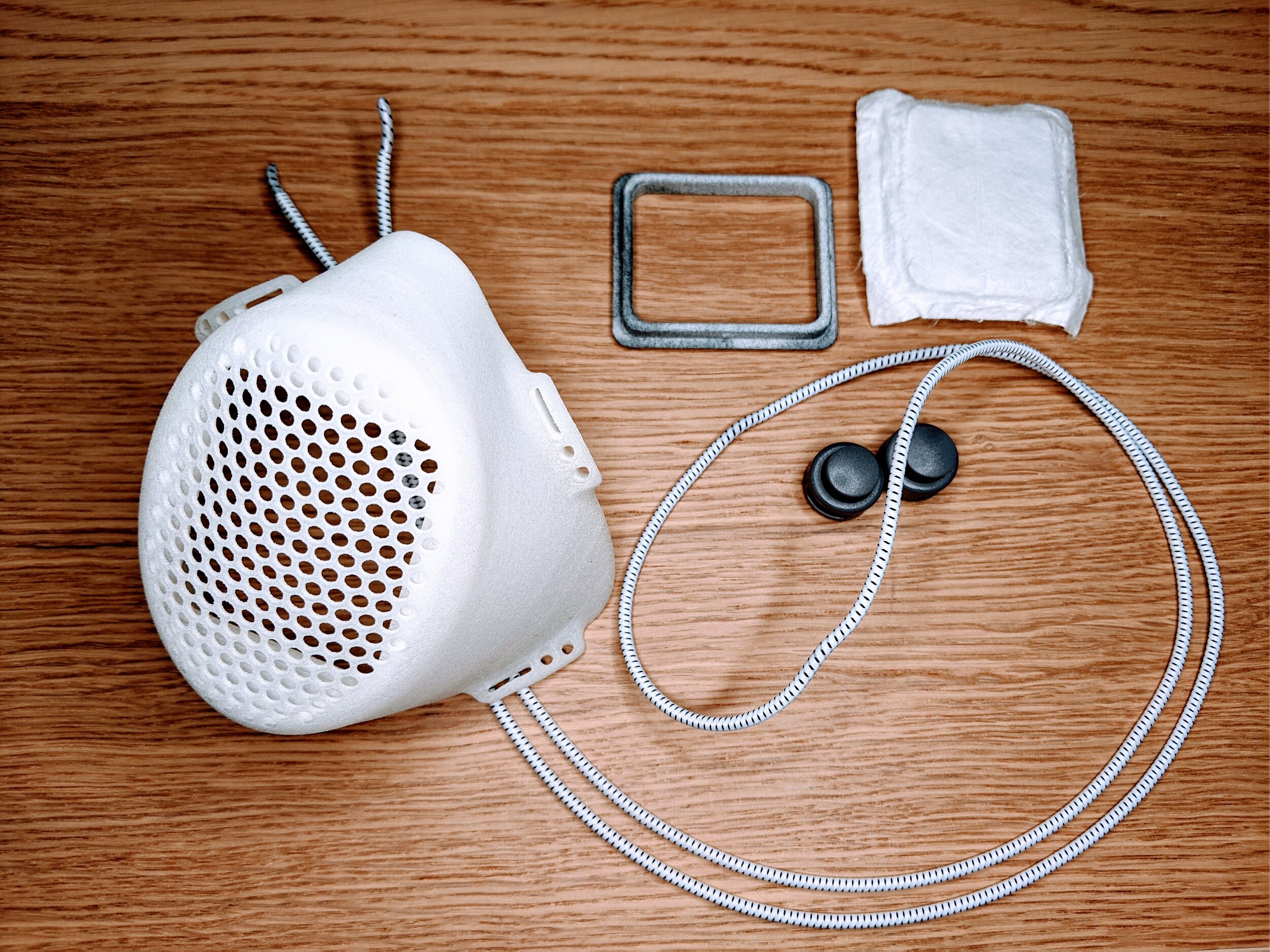











Making Filter Material from Surgical Masks




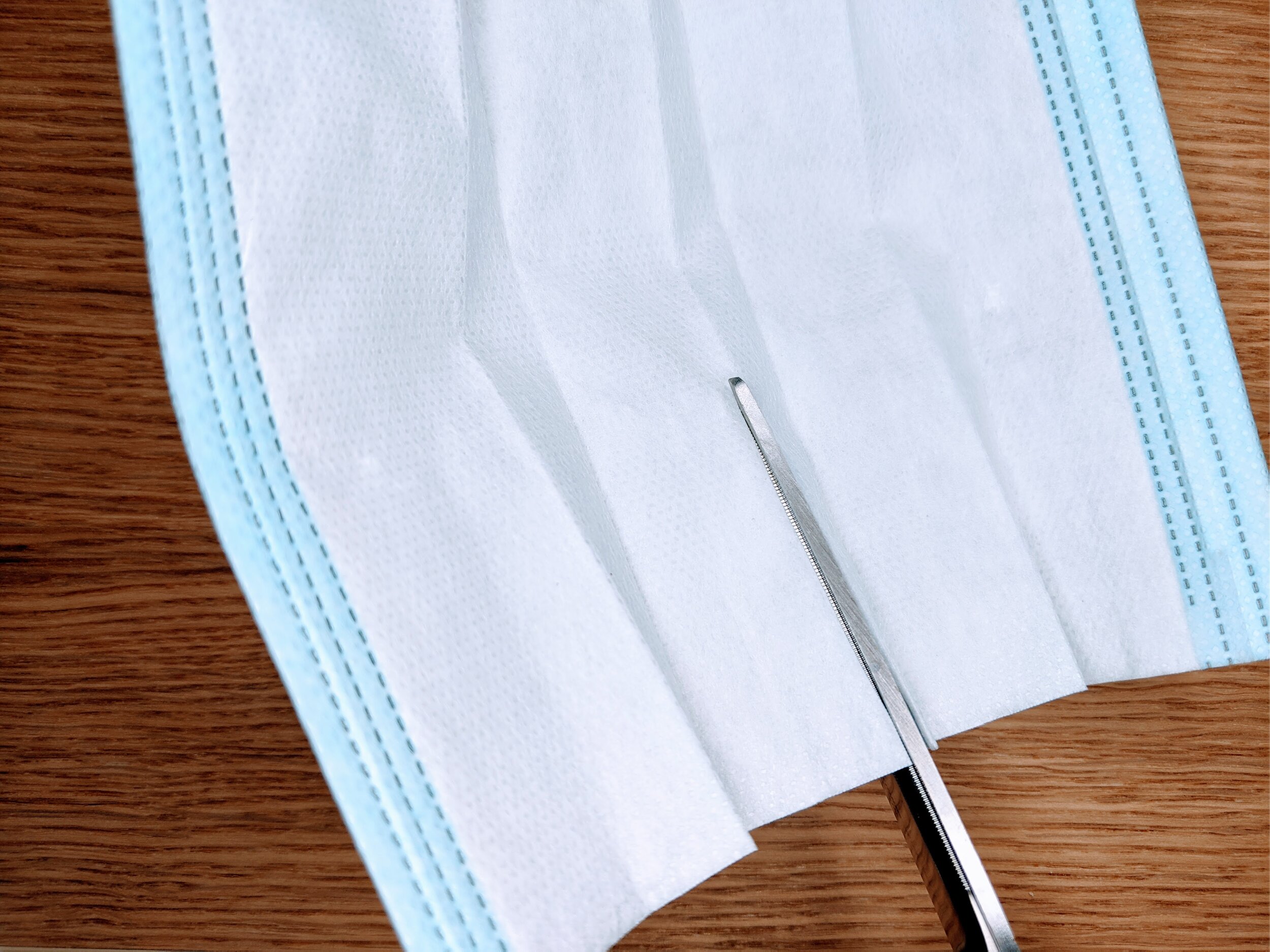
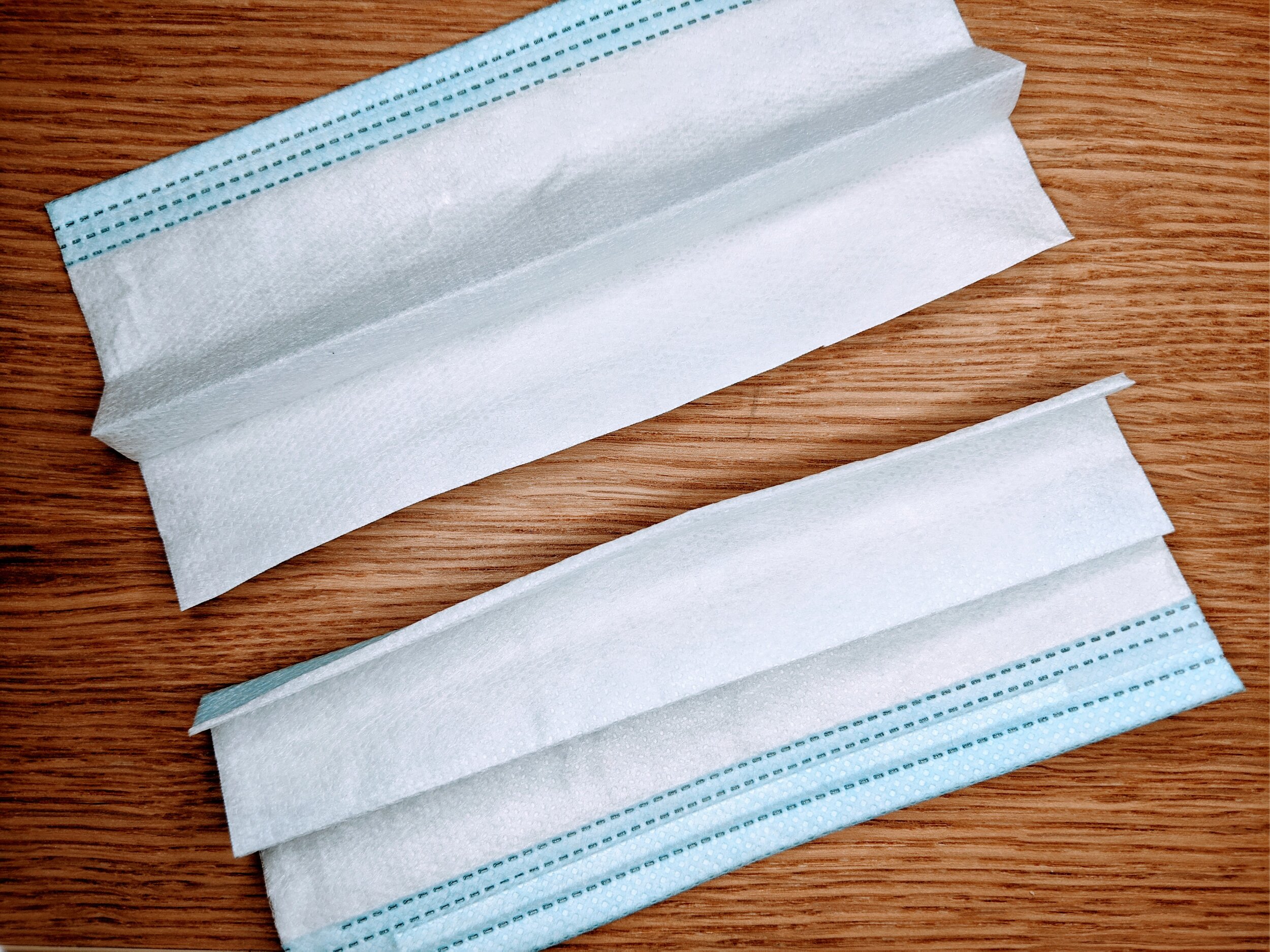
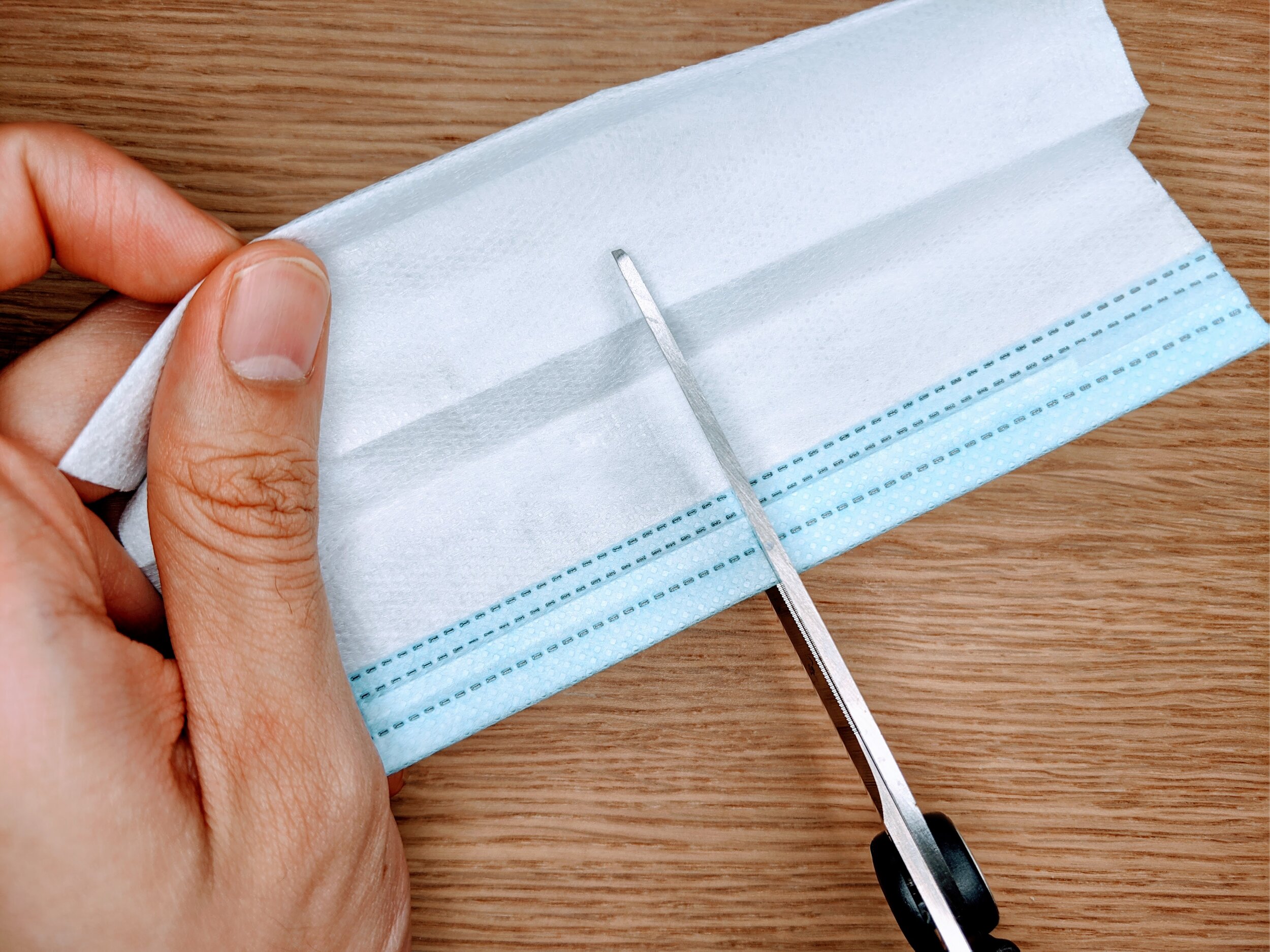

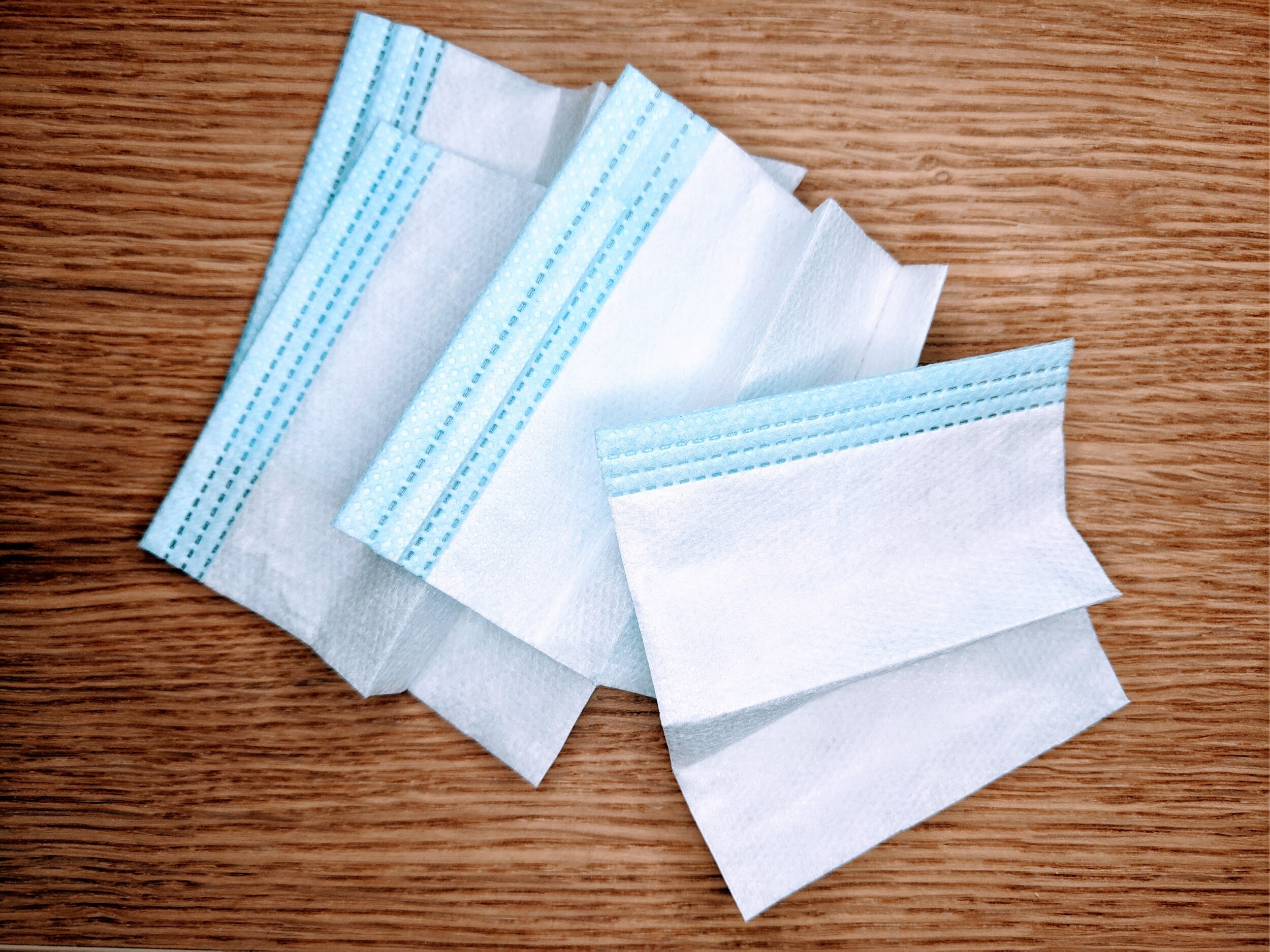
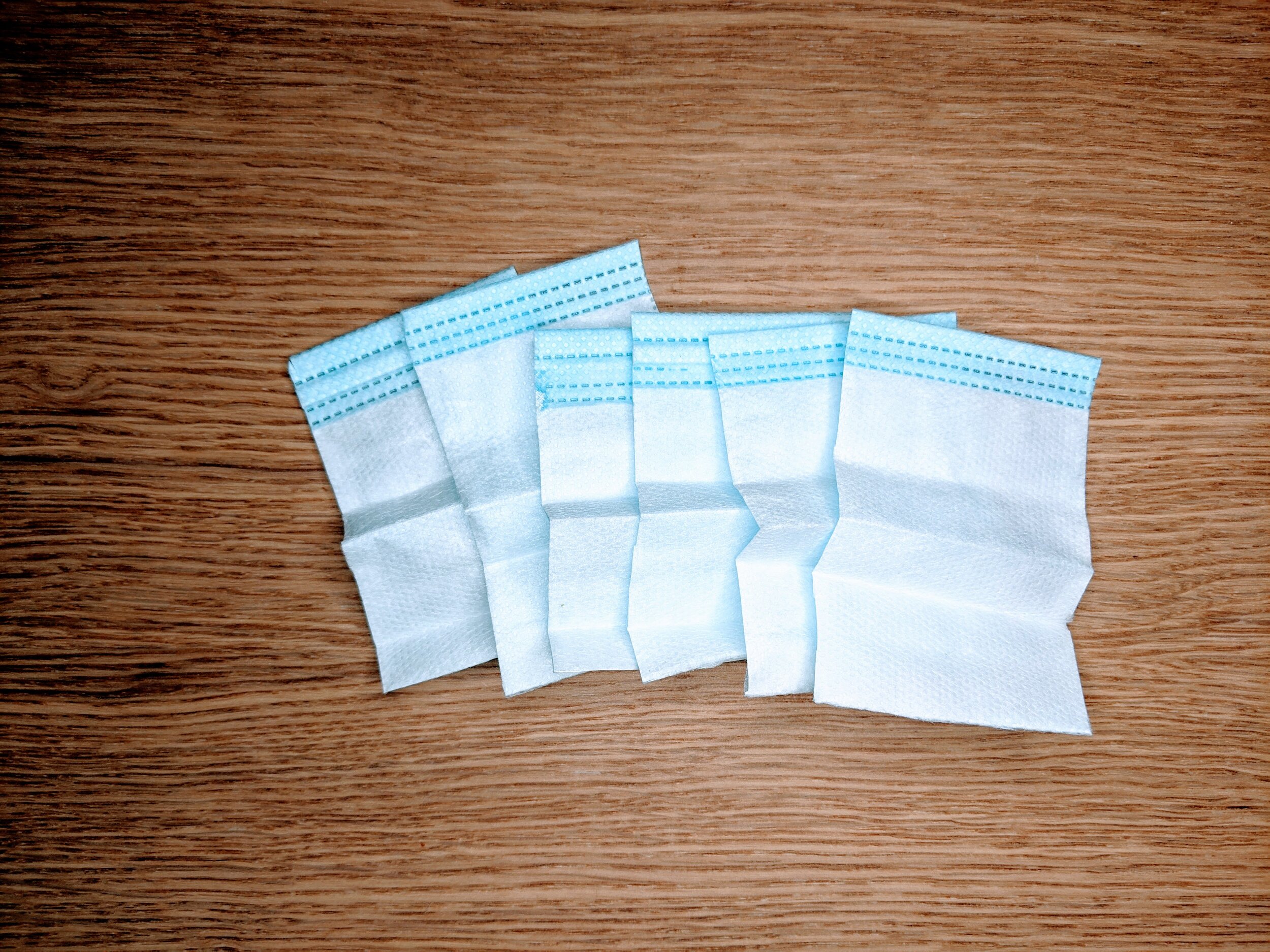
Making Filter Material from Consumer HEPA Replacement Filters
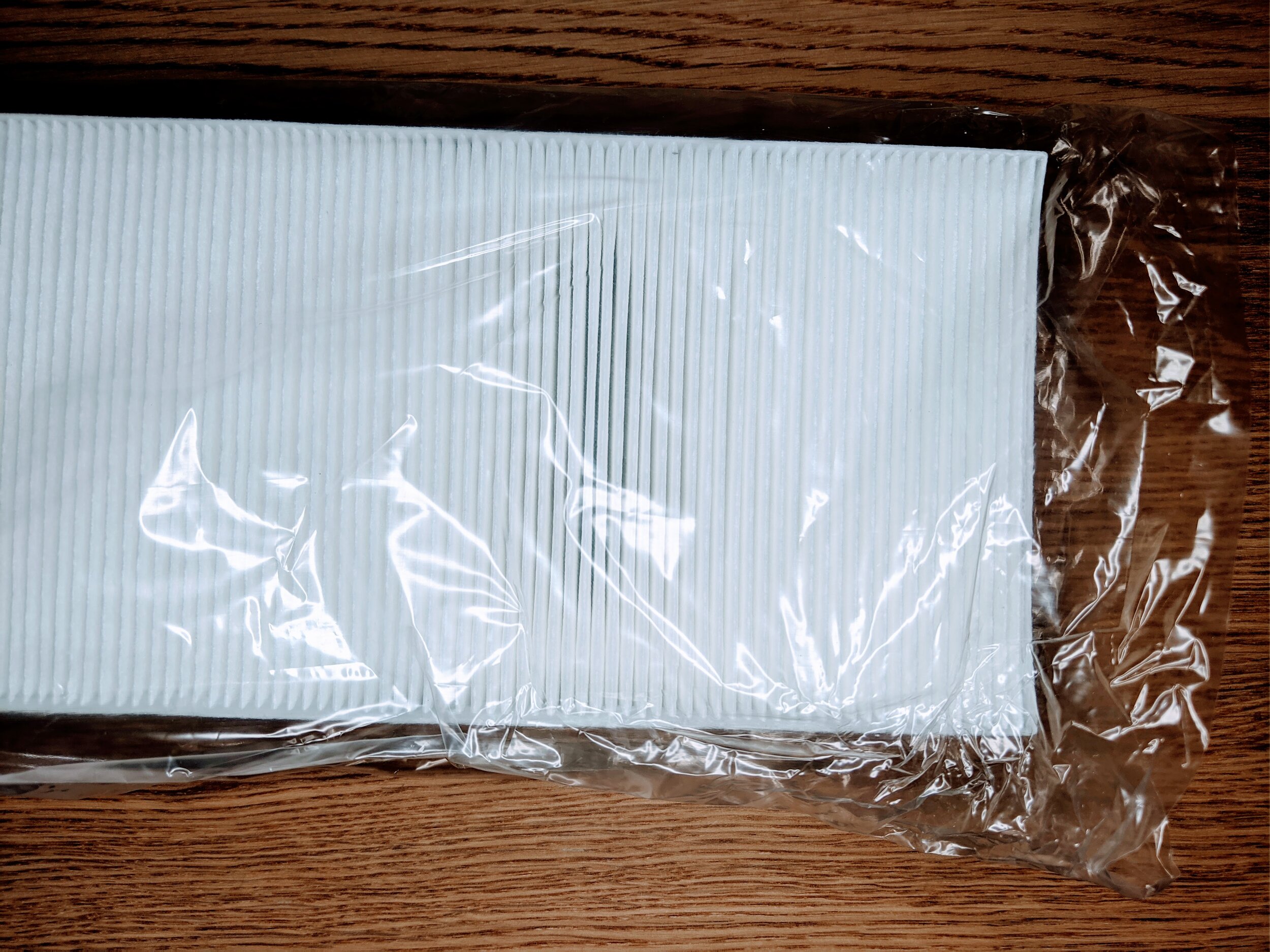
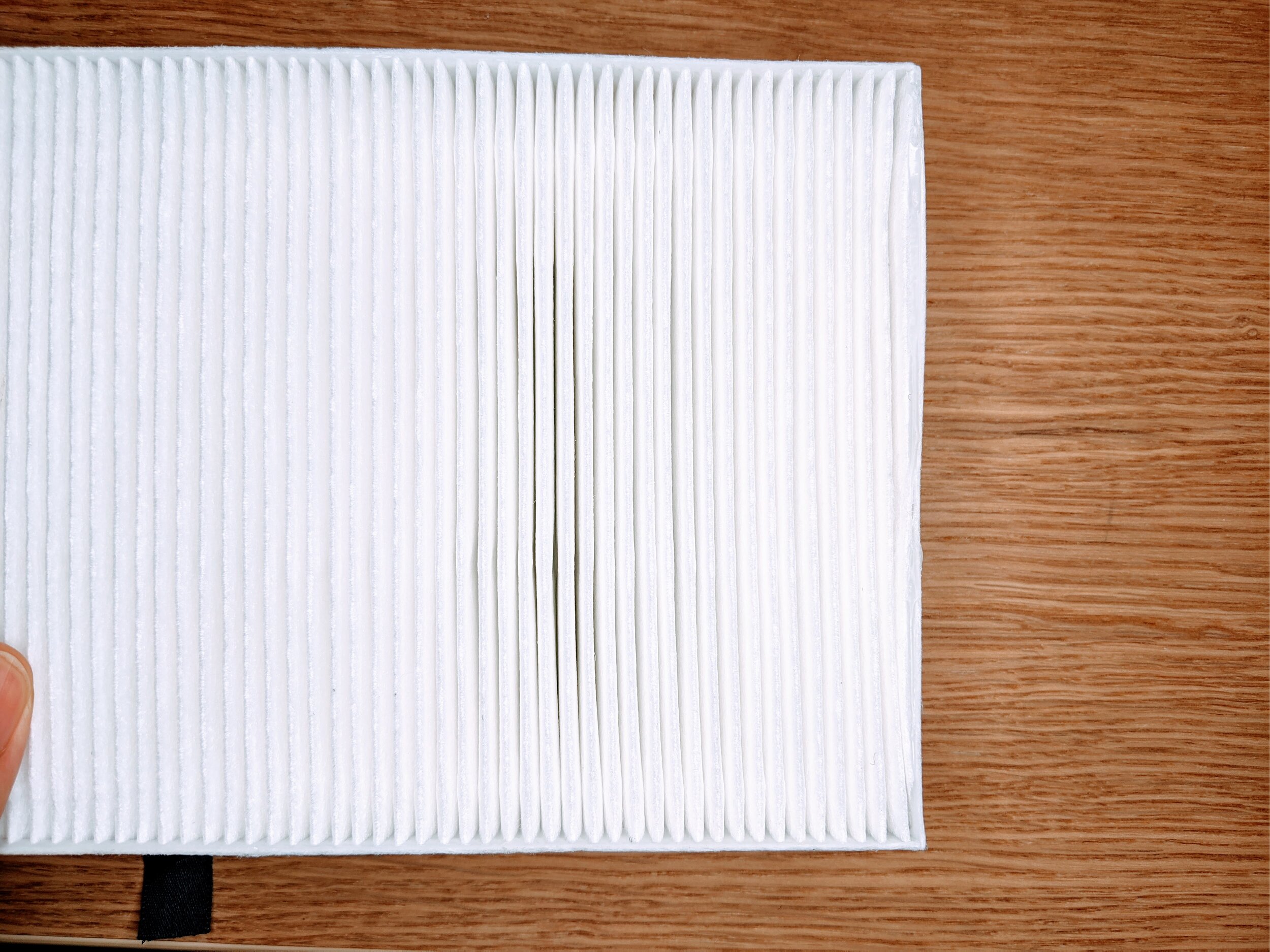
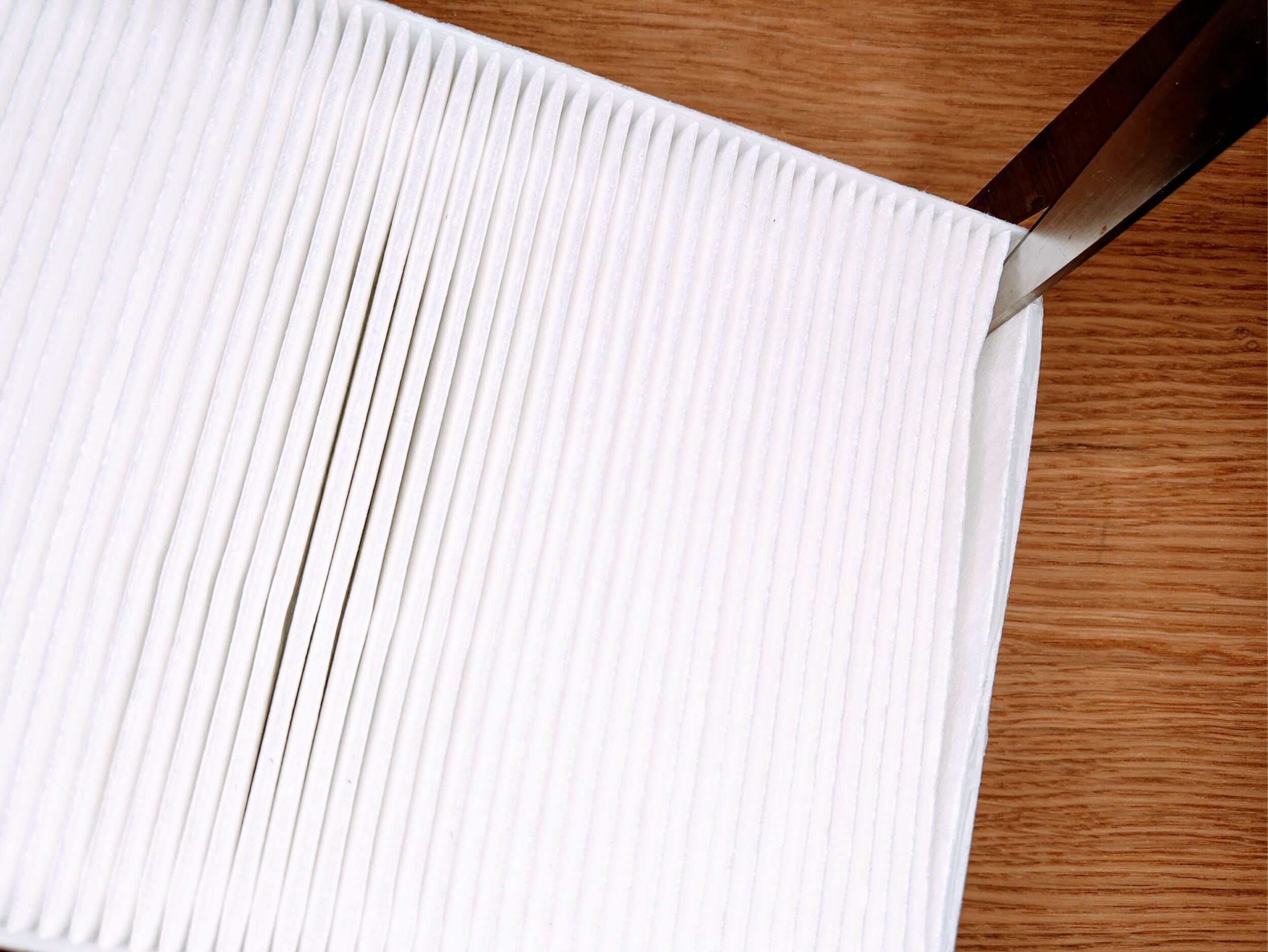

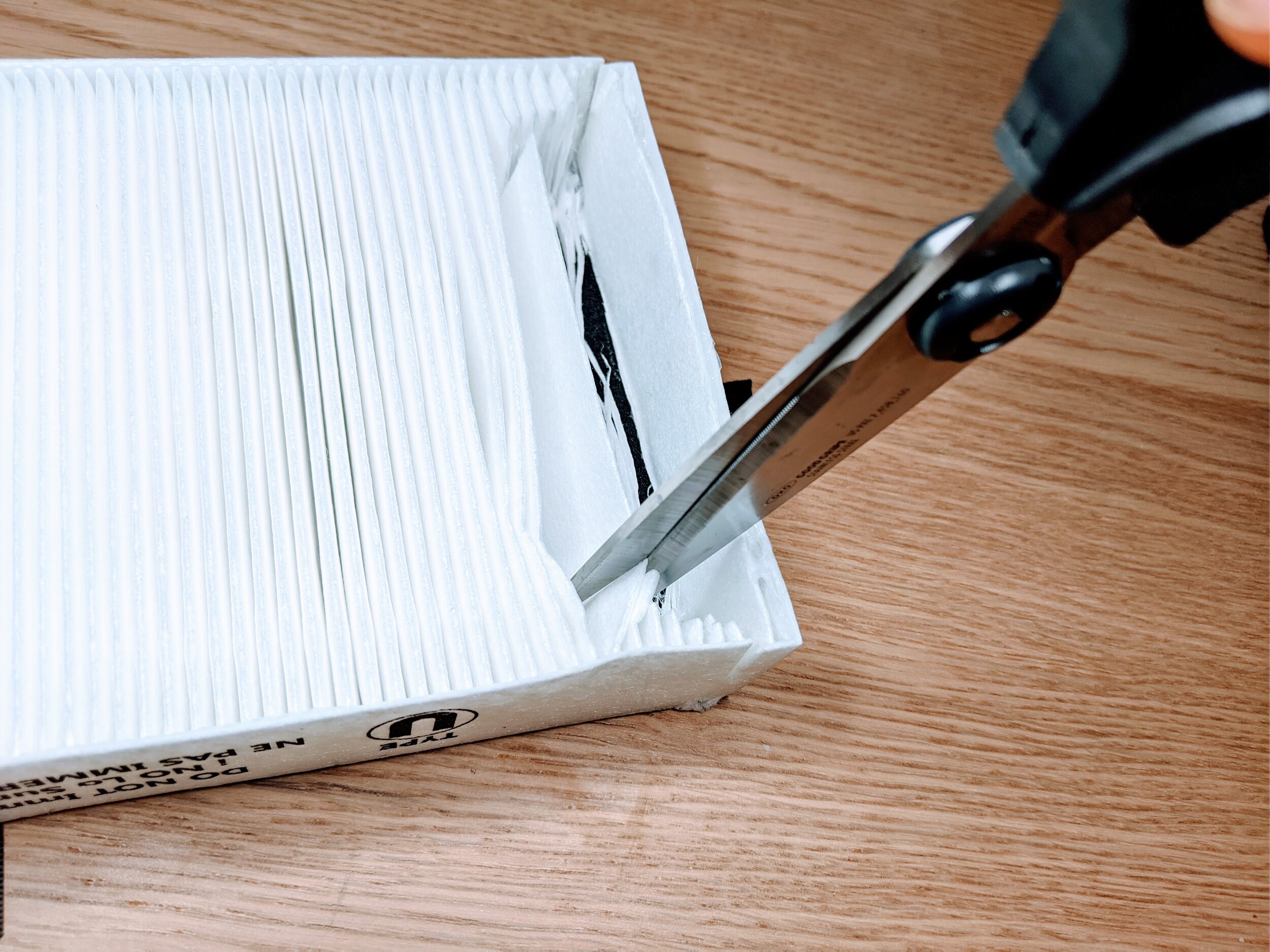
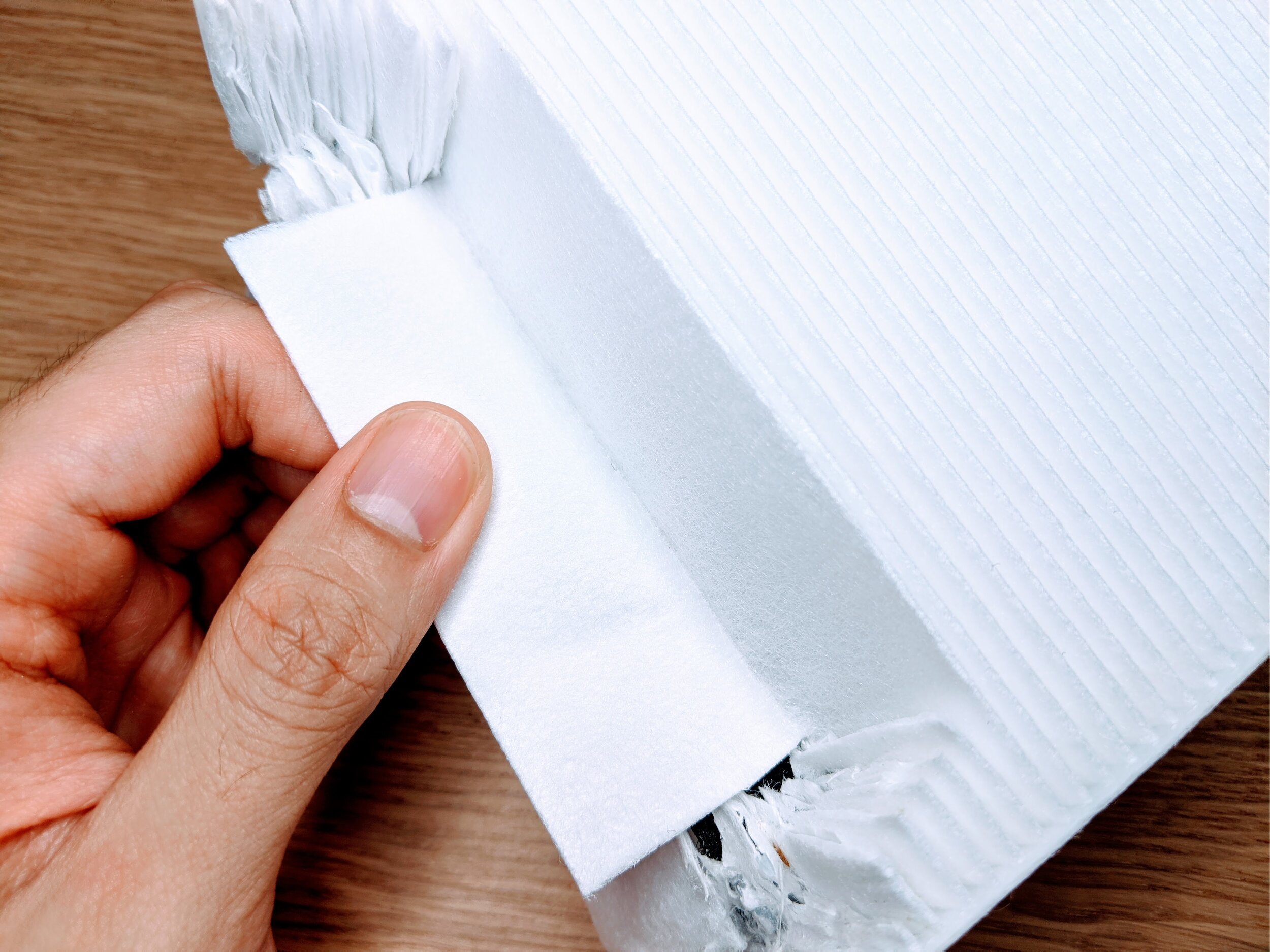

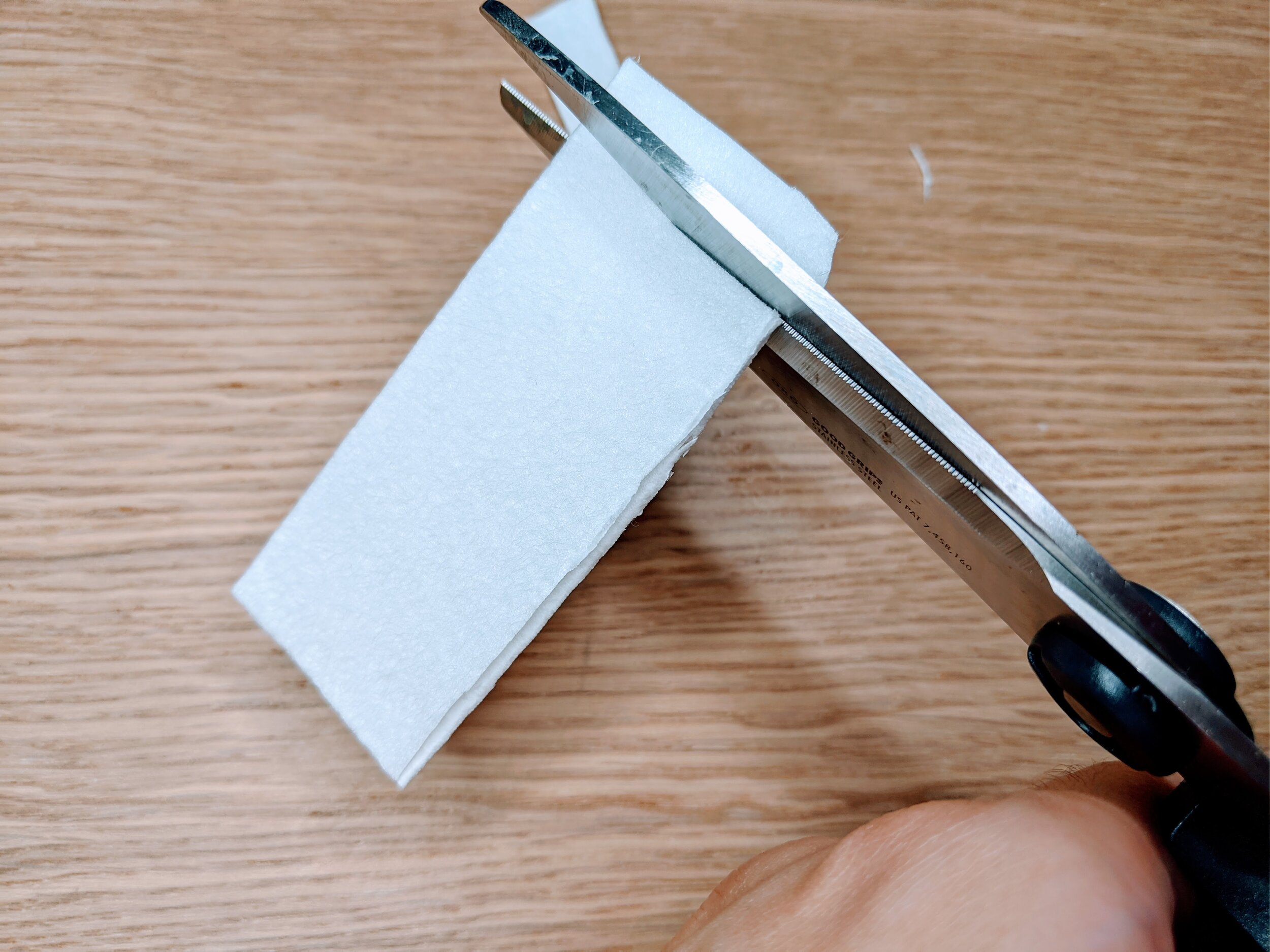
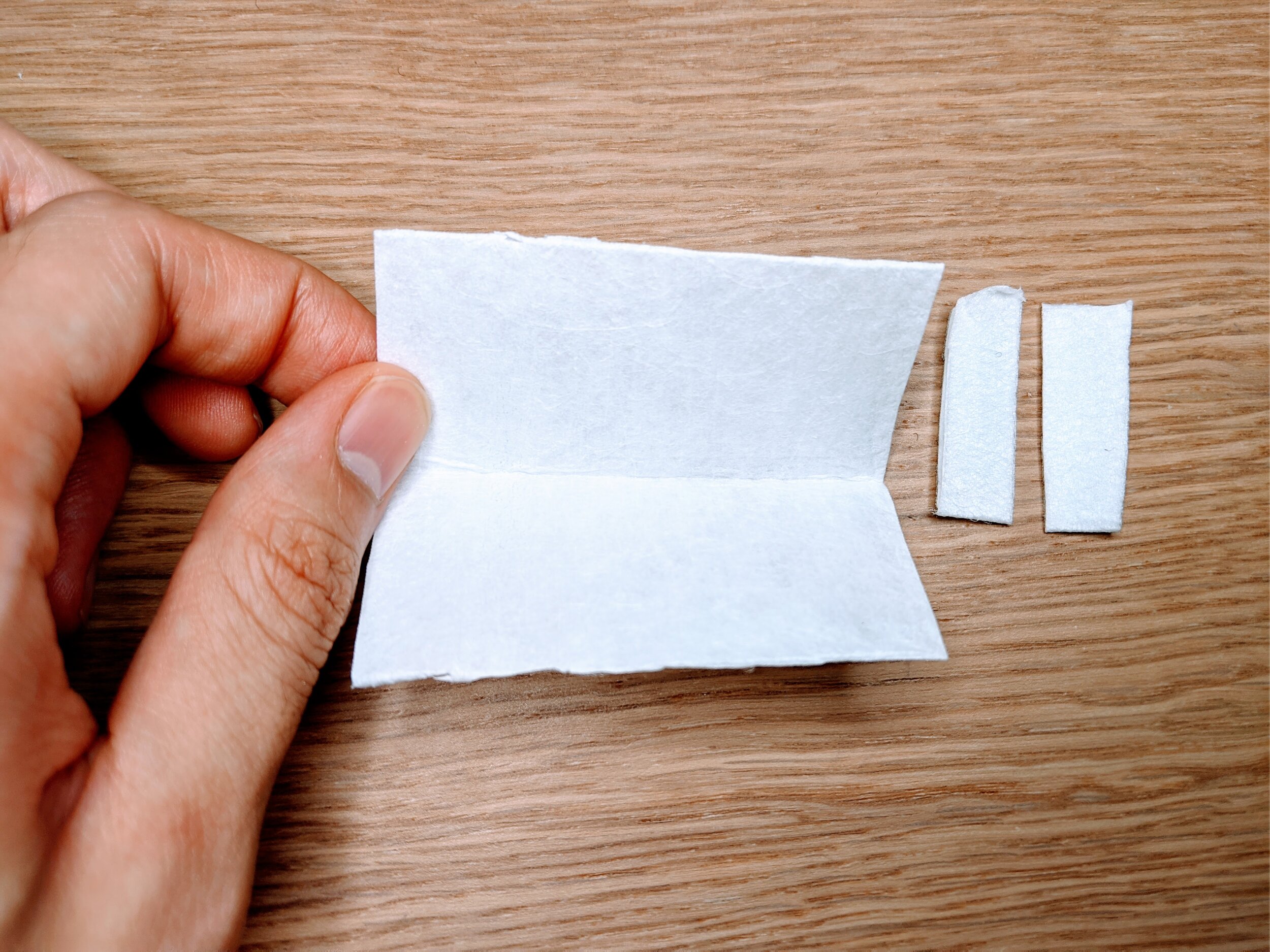
Usage Guidelines
Wearing
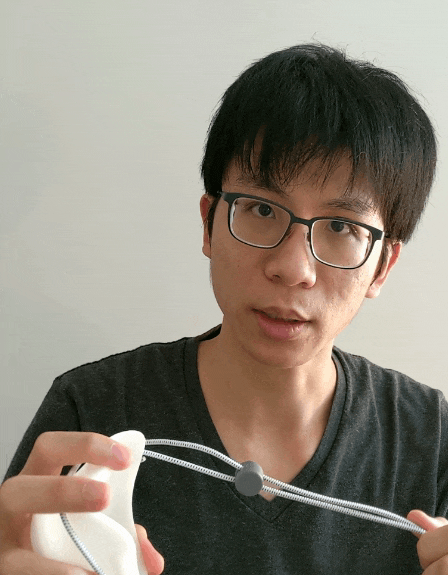
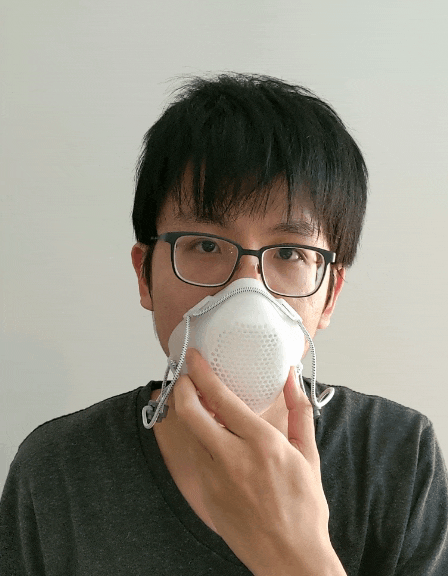

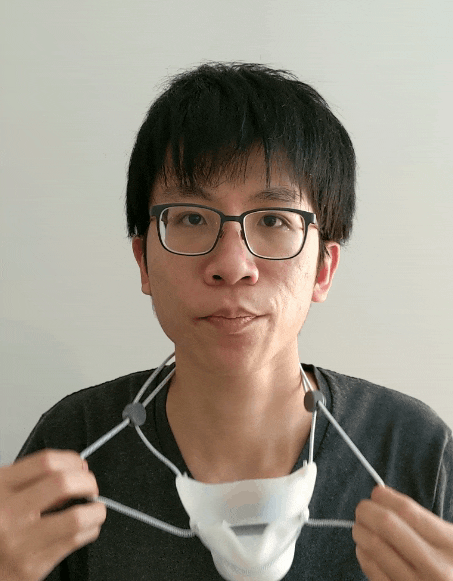
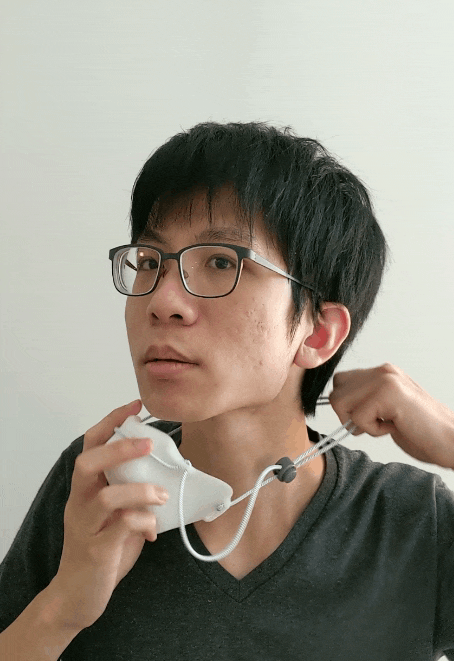
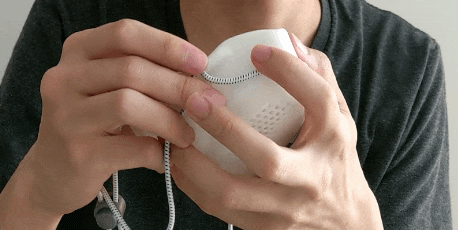
Washing
Before first use: Wash in a separate wash cycle with warm water. Dry on highest heat settings.
After first use:
If main mask piece is not dyed: you can wash with other clothing with warm water or in a separate wash cycle.
If main mask piece is dyed: recommended to wash in separate wash cycle with warm water.
Dry on the highest heat settings after wash.





























